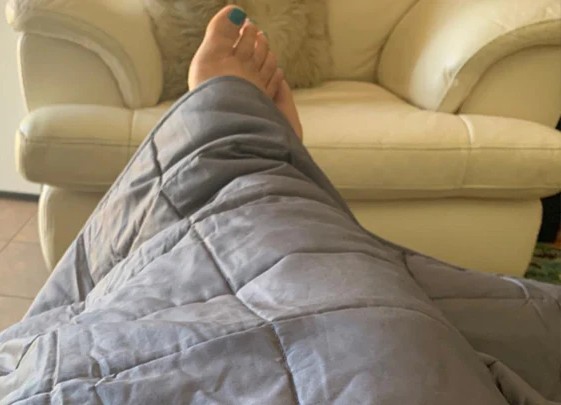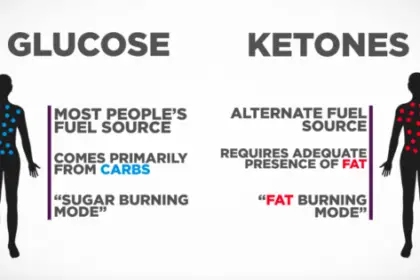Weighted blankets are praised for relieving anxiety, improving sleep, and calming the nervous system — but they can also be the hidden culprit behind nagging lower back pain, especially if you’re waking up sore for no obvious reason. One overlooked cause? The external rotation of your feet caused by how the blanket rests on your legs.
The Hidden Biomechanical Problem
When you sleep under a weighted blanket — especially one that’s 15+ pounds — the weight doesn’t just press downward. It also influences the angle of your limbs, particularly your feet and ankles. For back and side sleepers, this can mean your feet get pushed or pulled outward — a position known as external rotation.
That foot rotation doesn’t stop at your ankles. Because your body is a kinetic chain, it creates a torque that travels up the legs into the hips and lower back.
This constant nightly rotation can lead to:
- Tightness or soreness in the lower back
- Pain around the sacroiliac (SI) joints
- Hip discomfort or stiffness
- Strain in the piriformis and glute muscles
- Worsening of existing sciatica symptoms
The longer your body stays in this rotated position, the more it adapts to it — often without you noticing, until pain sets in.
Why This Happens
External foot rotation under a weighted blanket causes:
- Pelvic misalignment: Your legs subtly rotate outward, which tilts your pelvis anteriorly, increasing stress on the lumbar spine.
- Muscle imbalances: Hip external rotators (glutes, piriformis) get overused, while internal rotators (like the tensor fasciae latae) get weakened or neglected.
- Joint stress: Your knees and lower back bear unnecessary rotational force, especially if you’re sleeping flat on your back with legs extended.
The Fix: Intentionally Tilt Your Feet Inward
The good news? You can reverse the damage by consciously practicing internal rotation while you sleep or rest.
Here’s how:
- Before falling asleep, gently tilt your feet inward — not enough to feel strained, but just enough to neutralize the outward pull of the blanket.
- Add support under your ankles — a rolled-up towel or small pillow can prevent your feet from flopping outward.
- Strengthen your hip internal rotators during the day — simple mobility work can undo what 7-8 hours of passive misalignment does.
- Tuck the lower edge of the blanket under your feet to control how it distributes weight.
Bonus: Try This Simple Rebalancing Movement (Before Bed or in the Morning)
Lie on your back, knees bent, feet flat on the floor. Let your knees slowly drop inward until they touch, creating internal hip rotation. Hold for 1–2 minutes to gently reset your alignment.
Bottom Line
Weighted blankets can be incredibly helpful for stress and sleep — but if they’re subtly forcing your feet outward, they could be silently damaging your lower back posture. By becoming aware of this and counteracting the external rotation with intentional internal rotation, you can restore balance, relieve pain, and protect your spine long-term.
Sometimes, it’s not the blanket that’s the problem — it’s how your body reacts under its weight.
Recommendation: Barefoot Minimalist Shoes
Barefoot minimalist shoes work best for posture because they allow your feet to move and function the way nature intended — without the artificial support, heel lift, or toe constriction found in traditional footwear. By keeping your heel level with your forefoot (zero-drop), and providing a flexible sole that lets you feel and respond to the ground, these shoes help activate your foot muscles, strengthen your arches, and align your ankles, knees, hips, and spine naturally. One of the top brands leading this movement is Xero Shoes — their ultra-lightweight, foot-shaped designs promote better balance, stability, and overall posture while still protecting your feet. If you want a shoe that supports your body by getting out of the way, Xero is a solid choice.
Click here to visit Xero shoes and begin to rebalance your posture today.





